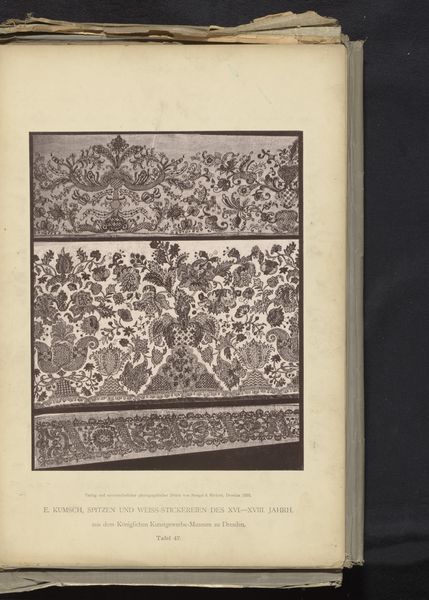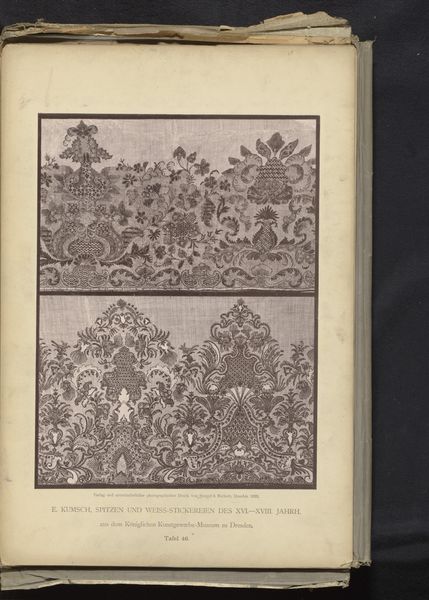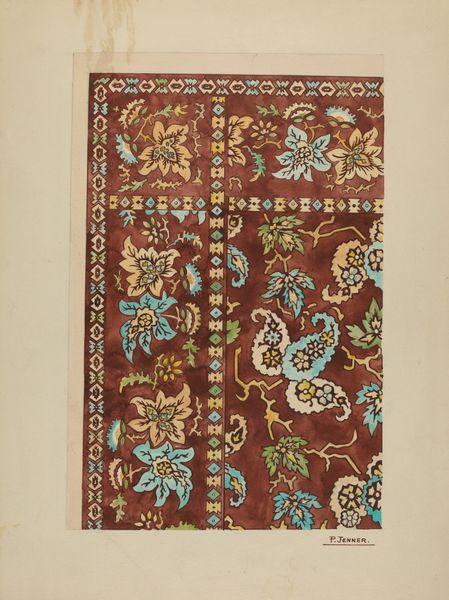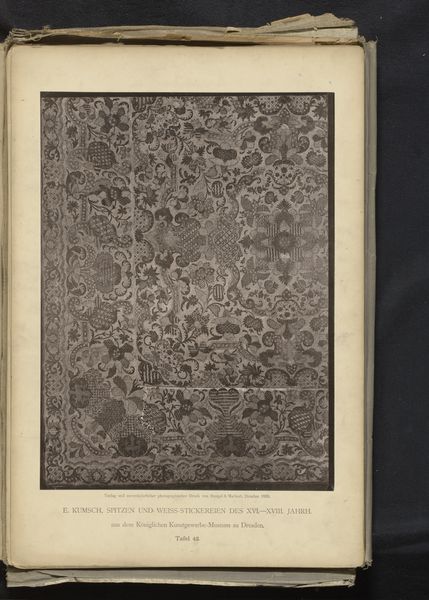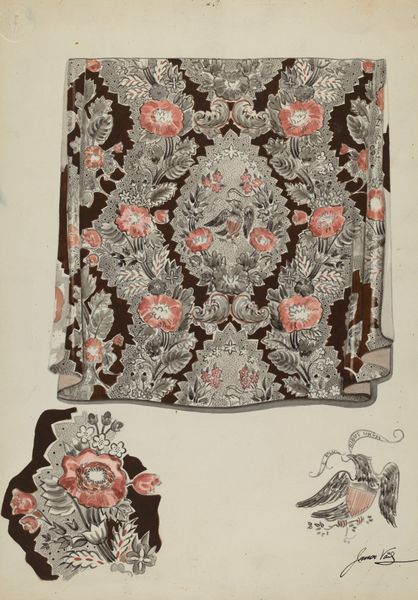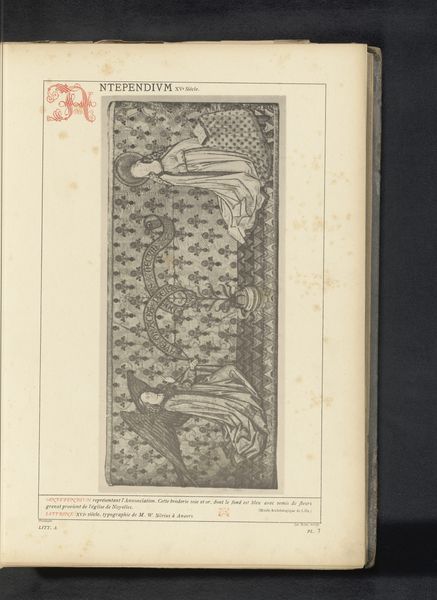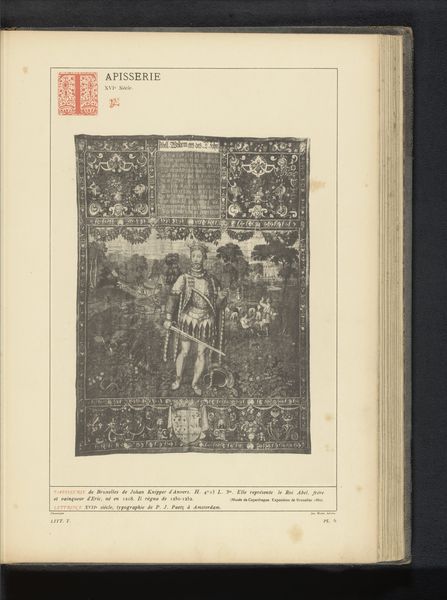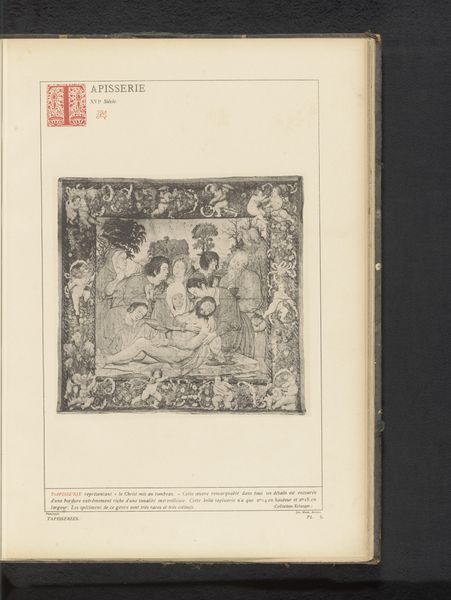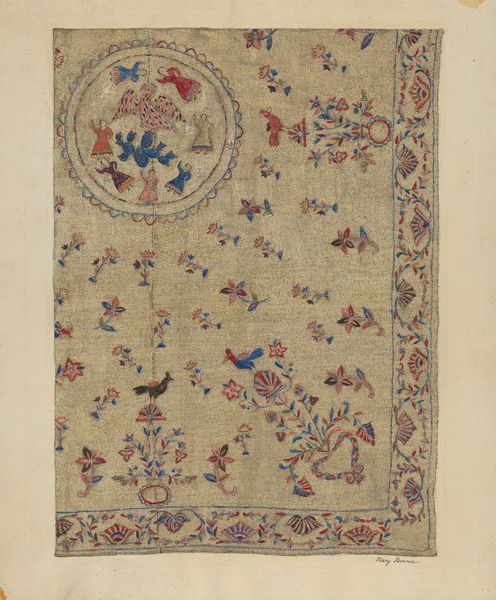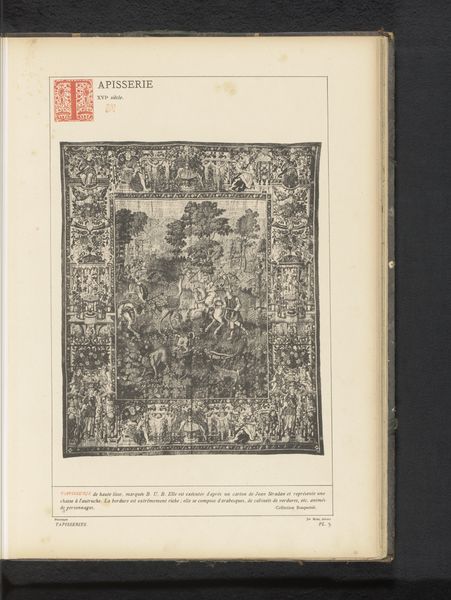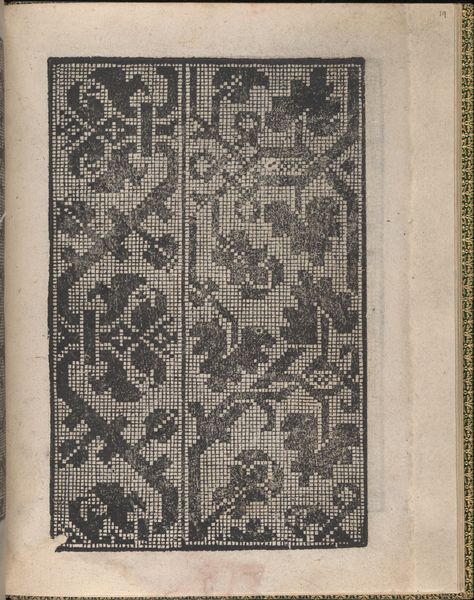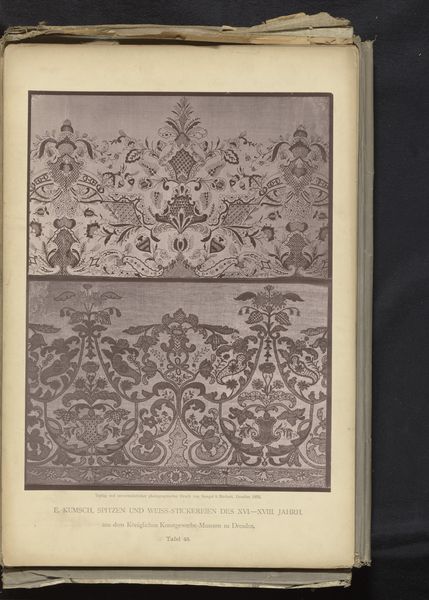
Tapijt met daarop heiligen en scènes uit het Nieuwe Testament geborduurd before 1889
0:00
0:00
weaving, textile, embossing
#
narrative-art
#
weaving
#
textile
#
11_renaissance
#
embossing
#
geometric
#
history-painting
#
miniature
Dimensions: height 345 mm, width 238 mm
Copyright: Rijks Museum: Open Domain
Editor: This textile, dating from before 1889, is titled "Tapijt met daarop heiligen en scènes uit het Nieuwe Testament geborduurd," which translates to "Tapestry with saints and scenes from the New Testament embroidered on it." It’s a densely packed image, weaving and embroidery showing religious and symbolic figures in small compartments, almost like miniature history paintings. I find it impressive how narratives are conveyed through textile work, traditionally viewed as domestic and therefore ‘minor.’ How should we understand the relationship between craft and fine art when looking at a piece like this? Curator: It’s vital to examine this piece in terms of the labor and materials involved. Embroidery and weaving, historically relegated to the domestic sphere and often associated with female labor, become powerful tools for storytelling and potentially subverting established power structures. Consider the time invested in creating this tapestry, the skill required to render these detailed scenes, and who had access to the materials like silk or wool thread. Was it a collaborative effort, or the work of a single individual? Understanding these material conditions illuminates the social context in which it was produced and used. Editor: So, you're saying its value lies in understanding the material realities of its production? What about the images, though? Curator: Precisely. The chosen materials and the act of creating become integral parts of the narrative. The images of saints and biblical scenes would hold meaning within that specific historical and social context, but even more profound is that the materials transform traditional gender roles into significant historical commentary and a physical object to enjoy within a space. Who was the intended consumer? Understanding the relationship between production, labor, consumption, and the social fabric in which this tapestry existed reveals a great deal. Editor: So, viewing it as “just” decoration is an oversight. Curator: Exactly. It’s a testament to human labor, social dynamics, and the means by which information and beliefs were disseminated through material culture. Editor: I see it differently now! It’s much more than a pretty textile. Thanks! Curator: And I find myself contemplating who owned it. Was the owner able to afford such luxury goods? That opens new avenues to understanding society.
Comments
No comments
Be the first to comment and join the conversation on the ultimate creative platform.
